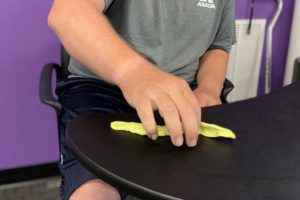The Importance of Adequate Sleep
February 21, 2023

We have been told by our doctors for years that eight hours of sleep per night is necessary. They continue to preach this, even today. While we are all aware of the eight-hour threshold, many of us may not be reaching that each night. And some of us may not understand why the eight hours is so necessary. With this blog, we will dive into the importance of adequate sleep, what constitutes a good sleep, and steps we can take to make sure we are getting enough sleep for proper function.
Why is sleep important?
There are many benefits for our minds and bodies that sleep can provide. Sleeping has the ability to reduce stress. If we aren’t getting enough sleep, we tend to have higher cortisol levels due to the irritability we may feel throughout our day. The higher the cortisol levels, the higher the stress or anxiety in our system. Sleep is also known to help maintain an ideal weight. The less sleep we get, the more food we are likely to consume. This increases body weight or BMI and could potentially be detrimental to our health. It is known that our appetite increases when we haven’t received enough sleep and rest, causing us to eat more and gain extra pounds. Finally, sleep has the ability to alter our decision-making. When we are deprived of sleep, our brain is not functioning at its optimal level, leaving us to make choices that may not be the best for us.
What constitutes a good sleep?
As mentioned earlier, the best sleep for an adult is going to be between 7 and 9 hours long. Any more, or less, and you may be looking at some of the issues described above. You’ll know you’ve had enough sleep when you can wake up feeling refreshed and re-energized, ready to take on the day! While some sleep all night, it may not be a restful sleep. Some may suffer from disorders that prevent restful sleep, such as sleep apnea, and continually feel fatigued throughout their day. Tests can be administered to determine whether or not a person suffers from one of these disorders. It is said that a person may enter in and out of “cycles of sleep” throughout the night with about 25% of your sleep being considered “deep”. As the body spends most of the night sleeping, it has the ability to heal and repair muscle tissue and balance hormones.
How do we get enough sleep?
The easiest adjustment to ensure plenty of sleep is changing your bedtime. Don’t be afraid to jump into bed earlier to make sure you hit at least the 7 hours of recommended sleep. Setting an alarm 10-15 minutes before bedtime may be a good reminder to wind down for the night. Creating a good sleeping space will also help you obtain the hours of sleep needed for one night. Put up some dark curtains, make the room a comfortable temperature, and utilize a fan or sound machine for a gentle, steady noise you can sleep to. If you have a favorite blanket or pillow, make sure those are nearby for optimal comfort. Finally, avoid electronics. The blue light from the screens is known to keep your brain firing and your body wide awake. Place all electronics out of reach and consider reading before your head hits the pillow. This will help your body move towards a relaxed state and prepare for a good nights’ sleep!
Resources:
https://health.gov/myhealthfinder/healthy-living/mental-health-and-relationships/get-enough-sleep
https://www.bannerhealth.com/healthcareblog/teach-me/how-sleep-can-affect-stress#:~:text=Sleep%20decreases%20cortisol%20levels,in%20anticipation%20of%20a%20fight.
https://www.healthline.com/nutrition/sleep-and-weight-loss#:~:text=Getting%20enough%20sleep%20may%20help%20prevent%20increases%20in%20calorie%20intake,intake%20(%2016%20%2C%2017%20).
https://my.clevelandclinic.org/health/diseases/8718-sleep-apnea











